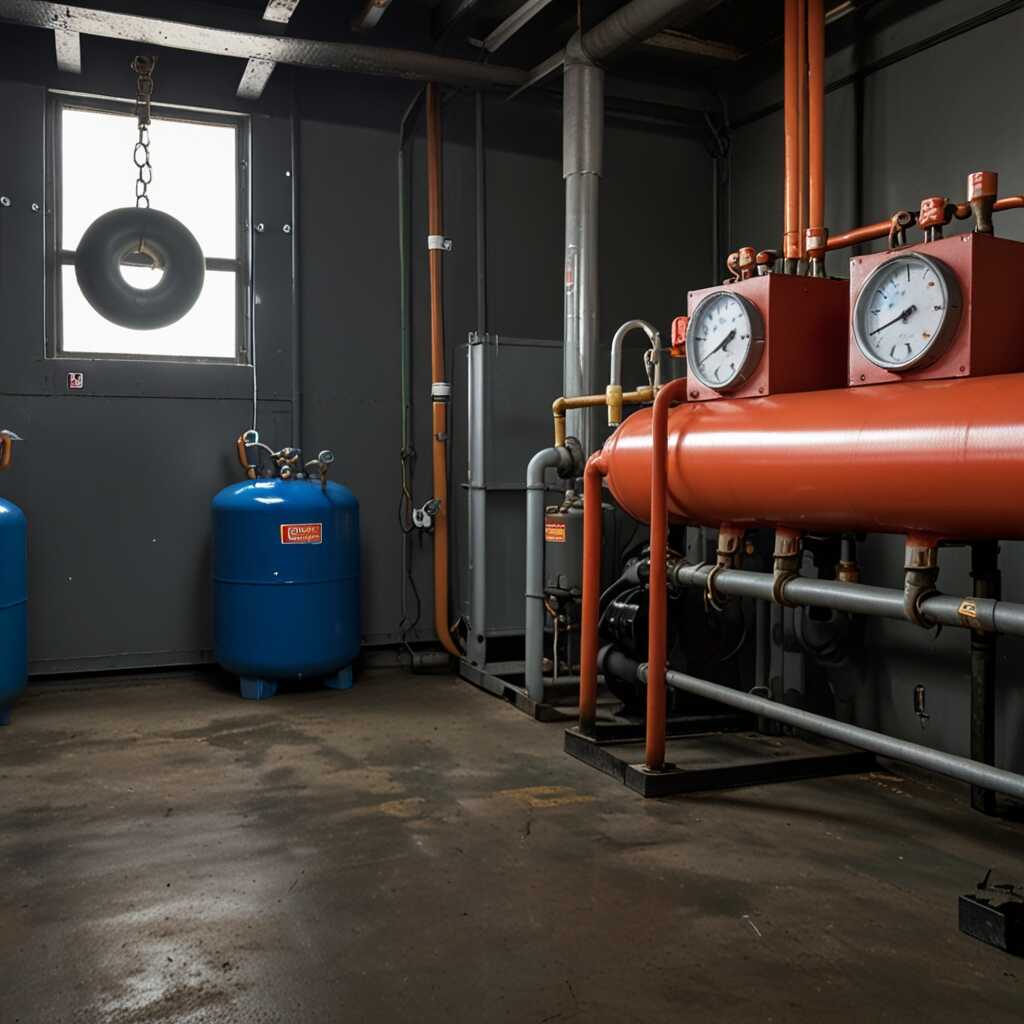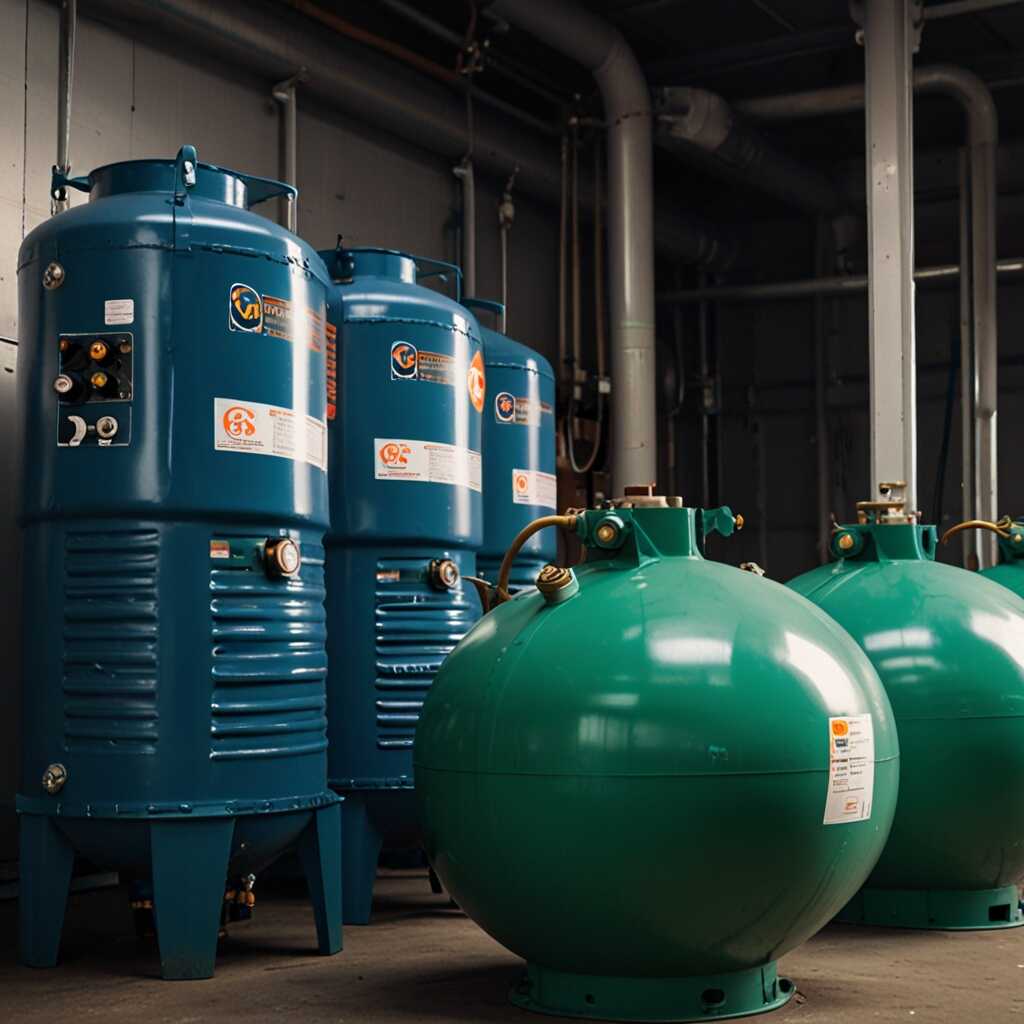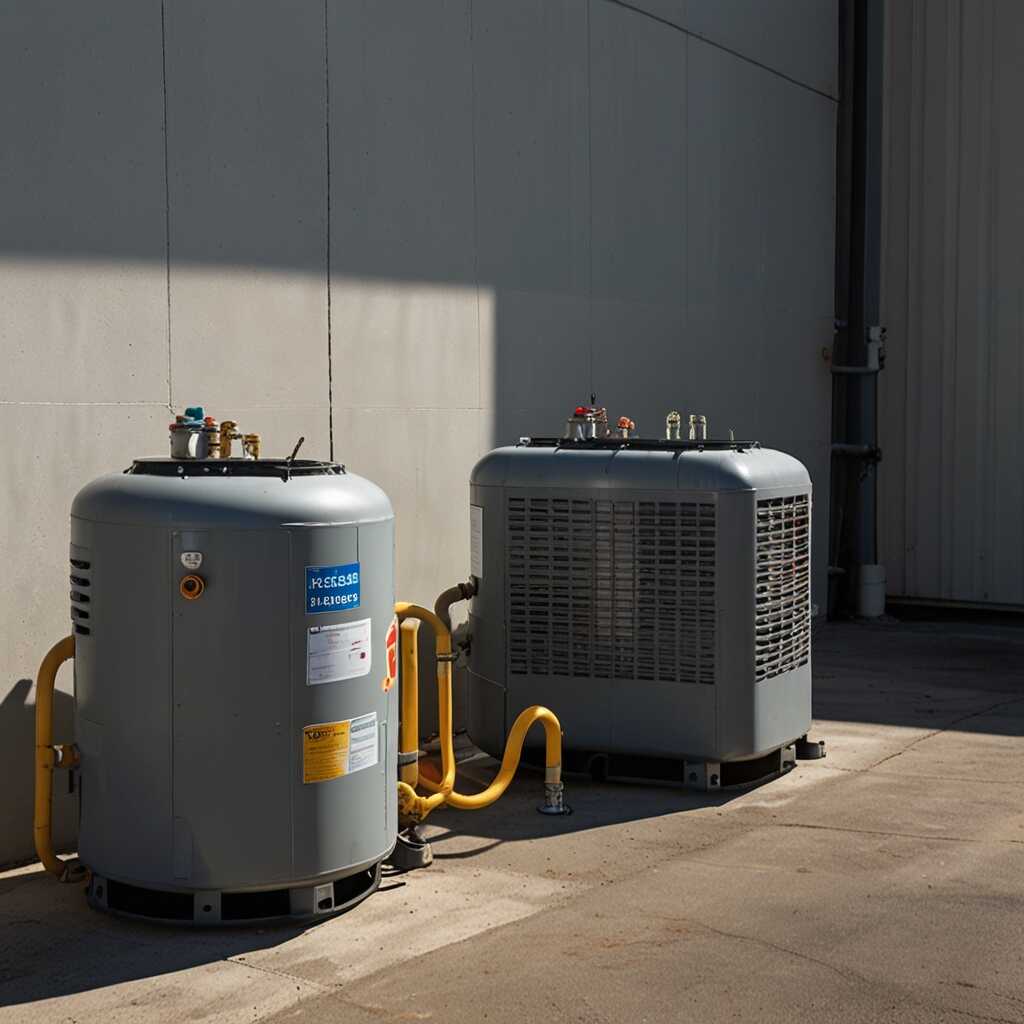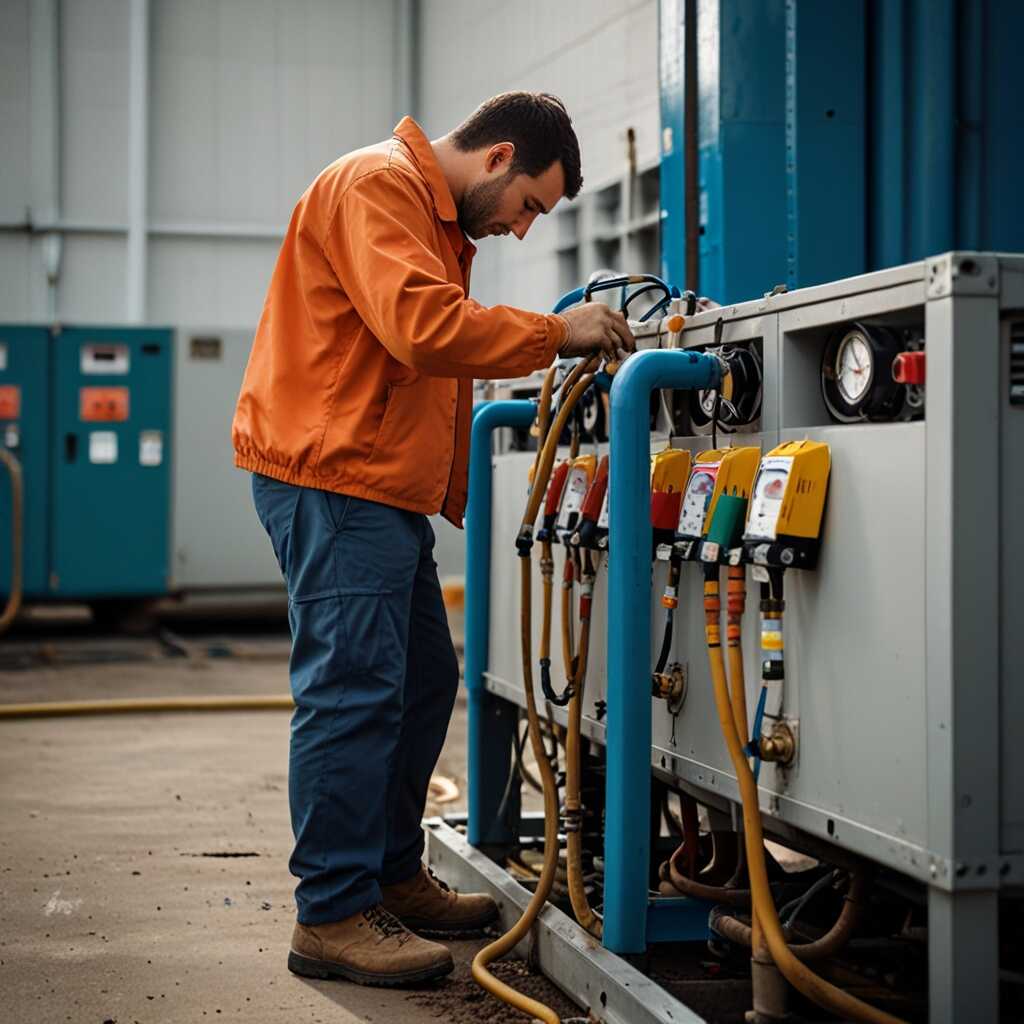Optimizing maintenance with hour meters on refrigerant recovery machines is essential for prolonging equipment life. These hour meters provide crucial data on machine usage, enabling technicians to schedule timely maintenance. By tracking hours, HVAC professionals can ensure compliance with regulations and improve the performance of their systems. Refrigerant Recovery Pro offers expert guidance on best practices, helping users to effectively utilize hour meters for maintenance and longevity.
Overview of Refrigerant Recovery Machines in HVAC Applications
Refrigerant recovery machines play a crucial role in HVAC systems by safely extracting refrigerants from units undergoing repairs or decommissioning. Their main functions include recovering refrigerant, ensuring compliance with environmental regulations, and preventing refrigerant leaks. These machines vary in types, such as portable units and larger, stationary models, each designed for specific applications with differences in performance and efficiency. Monitoring hours of operation helps establish maintenance schedules, which enhance the machine’s reliability and extend its lifespan, ensuring they remain compliant with relevant regulations.
Types of Refrigerant Recovery Machines
Refrigerant recovery machines come in several designs, each tailored for specific operational needs. Portable units usually handle small to medium-sized jobs and are easy to transport, whereas larger machines are better suited for extensive commercial applications. Performance can vary based on the machine’s horsepower and recovery speed. Many advanced models are equipped with features like automatic shut-off to minimize risks during operation. Owners should regularly monitor maintenance schedules, as machines often require servicing after a specific number of operating hours, which can range from 40 to 100 hours, depending on usage and manufacturer recommendations.
Mechanics of Hour Meters in Recovery Machines Explained
Hour meters in refrigerant recovery machines function as essential tools to track operation time. These devices measure the total run hours of the equipment, allowing HVAC professionals to monitor usage patterns. This tracking is crucial for scheduling maintenance and ensuring compliance with regulations. The technology behind hour meters is straightforward; they rely on electrical signals to log the machine’s operating hours. Manufacturers design these hour meters to provide reliable data, enhancing the efficiency and longevity of the recovery machines.
Importance of Regular Hour Meter Monitoring
Regular monitoring of hour meter readings plays a vital role in maintenance tracking for refrigerant recovery machines. HVAC technicians should check these readings at least weekly to schedule timely maintenance and avoid breakdowns. This proactive approach leads to reliable performance and can significantly extend the equipment’s lifespan. A well-maintained recovery machine provides exceptional efficiency, reducing the risk of costly repairs. This ensures that technicians meet certification and safety standards effectively. Consistent hour meter tracking can also generate useful data for equipment reviews and comparisons, enabling better decision-making for future purchases.

Maximizing Equipment Longevity through Hour Meter Tracking
Hour meter tracking significantly enhances the reliability and efficiency of refrigerant recovery machines. By consistently monitoring machine hours, technicians can identify the right time for essential maintenance tasks. This proactive approach ensures that facilities adhere to high performance standards. Regular maintenance leads to improved longevity and reduced operational downtime. The most vital maintenance tasks include oil changes, filter cleaning, and system checks, which can be triggered by hour meter readings. It is recommended to service recovery machines after approximately 50–100 hours of operation, depending on usage patterns.
Essential Maintenance Tasks Based on Hour Meter Readings
Understanding the essential maintenance tasks linked to hour meter readings is vital for refrigerant recovery machines. Key activities include changing the compressor oil to avoid wear and premature failure. Cleaning filters helps maintain airflow efficiency and reduce strain on components. Additional checks may involve examining hoses, ensuring all seals are intact, and testing pressure levels. Each of these tasks plays a role in the overall recovery machine performance and enhances its durability. Focusing on regular, data-driven maintenance allows HVAC technicians to maintain compliance with regulations and improve system reliability.
Key Statistics on the Impact of Hour Tracking
- Hour meters can track usage accurately, down to 0.1 hours.
- Regular maintenance can extend equipment life by 20% or more.
- 80% of HVAC failures stem from lack of maintenance.
- Machines with hour meters require service every 200 hours on average.
- Proper usage of hour meters can save HVAC businesses up to 15% on operational costs.
- Almost 40% of HVAC professionals see hour meters as vital for compliance.
- Tracking hours can reduce refrigerant leaks by 10% or more annually.

Best Practices for Maintaining Service Records Using Hour Meters
Effective logging of maintenance records relies on several key elements, such as recording date, hour meter reading, and specific maintenance performed. Each log entry should clearly indicate the type of service executed, whether it is an oil change, filter replacement, or performance check of refrigerant recovery machines. Consistent updates to these records enhance reliability when scheduling future maintenance, ensuring compliance with regulatory needs. Correctly tracking these details helps create an efficient maintenance schedule based on actual equipment usage reflecting hour meter readings.
Optimal Frequency for Conducting Maintenance Checks
Establishing an optimal frequency for maintenance checks is crucial for refrigerant recovery machines. Many experts recommend that maintenance checks occur every 100 hours of operation or according to the manufacturer’s guidance. This frequency enables technicians to identify wear and tear before it impacts machine performance. Keeping a log of hour meter readings assists in recognizing patterns and planning these checks effectively. Following this practice can prevent costly downtime and maintain compliance with industry standards.

Analyzing Maintenance Needs from Hour Meter Data Insights
HVAC technicians can interpret hour meter data to identify critical maintenance needs by analyzing usage patterns. Regularly monitoring the data reveals trends, such as when equipment experiences increased wear or diminished performance. For instance, if hour meter readings consistently show higher usage in a specific season, it may prompt earlier maintenance checks to enhance reliability and prevent breakdowns. Key indicators might include rising operational costs, frequent service calls, or recurring issues that can be traced back to insufficient maintenance. Understanding these insights can significantly improve the durability of the equipment and ensure compliance with industry standards.
Common Hour Meter Data Patterns Indicating Maintenance Needs
HVAC professionals often find specific hour meter data patterns indicating when maintenance is critical. For example, if a refrigerant recovery machine exceeds 500 hours of operation without servicing, this can be a reliable cue for scheduled maintenance. The performance may start to decline noticeably after extensive usage, leading to reduced efficiency and potential system failures. Implementing routine checks based on established hour thresholds, such as every 300 or 500 hours, greatly enhances the machinery’s longevity. Regular reviews of hour meter data ensure that HVAC systems operate optimally while minimizing downtime and repairing costs.
Advantages of Monitoring Equipment Operating Hours
- Users can schedule maintenance based on actual usage, reducing downtime.
- Hour meters help identify maintenance needs for refrigerant recovery machines.
- Tracking hours boosts compliance with industry regulations and standards.
- It enhances the equipment’s reliability and performance in HVAC systems.
- Hourly data aids in forecasting future maintenance and budgeting.
- Technicians can prioritize service based on machine utilization patterns.
- Routine checks help avoid costly repairs and extend machine lifespan.

Incorporating Hour Meter Readings into Maintenance Schedules
Integrating hour meter readings into your maintenance routine is essential for tracking equipment usage. Start by recording the hour meter readings during each service appointment. Schedule maintenance based on these readings to ensure reliability. For multiple refrigerant recovery machines, maintain a centralized log to track all hour meter readings. This tracking helps identify trends in performance and maintenance needs. Adopting a structured maintenance plan enhances operational compliance and extends equipment lifespan.
Benefits of Regularly Tracking Hour Meter Readings
Tracking hour meter readings not only helps schedule maintenance more efficiently but also provides insights into machine performance. Regular review of these readings allows technicians to identify when a unit requires servicing before issues arise. This proactive approach reduces downtime and maintenance costs. For HVAC technicians, using software to log hour meter readings can streamline the whole process, making it easier to access reliable data on equipment usage. Implementing these strategies with accuracy ensures that refrigerant recovery machines remain in excellent condition and perform optimally. Refrigerant Recovery Pro’s expert guidance can assist in optimizing this process effectively.
Importance of Hour Meters in Achieving Regulatory Compliance
Hour meters play a crucial role in meeting compliance standards for refrigerant recovery equipment. Accurate hour logging facilitates essential documentation for regulatory audits. These records help HVAC professionals track operating hours to ensure timely maintenance, thus adhering to EPA guidelines. The EPA mandates equipment testing and documentation that supports regulatory compliance. Reliable hour meter accuracy enables technicians to maintain their refrigerant recovery machines efficiently, providing a clear history that regulatory bodies can review. Users can maintain better maintenance schedules, enhancing the reliability and durability of their equipment.
Understanding Compliance Standards for Refrigerant Recovery
Compliance standards for refrigerant recovery machines focus primarily on efficiency and environmental safety. These regulations require HVAC technicians to follow specific maintenance schedules based on equipment operating hours logged by hour meters. For instance, many manufacturers suggest maintenance checks after every 100 hours of use. Adhering to this schedule ensures your machines stay compliant with the latest EPA regulations and allows for efficient performance throughout their lifespan. Following these guidelines prevents costly compliance violations and enhances overall operational efficiency.
Leading Brands in Refrigerant Recovery Equipment and Their Features
- Brand A: Known for robust build quality; ideal for heavy-duty use but relatively high in price.
- Brand B: Affordable, lightweight, easy to use. Ideal for small businesses but less durable.
- Brand C: Offers advanced hour tracking features but comes at a premium cost.
- Brand D: Reliable for everyday use; good after-sales support but a bit complex to operate.
- Brand E: Known for energy efficiency, appealing to eco-conscious technicians, but higher upfront investment.
- Brand F: Popular among DIY enthusiasts; easy to use but lacks advanced features.
- Brand G: Designed for large-scale operations, provides detailed usage analytics to aid maintenance decisions.
Emerging Trends in Technology for Monitoring Refrigerant Recovery
Recent advancements in hour meter technology for refrigerant recovery machines focus on enhanced reliability and data analytics. The latest models can track runtime and provide critical alerts regarding maintenance needs, ensuring that HVAC technicians stay compliant with regulations. These innovations enable better testing and review practices, allowing operators to make informed decisions about equipment longevity. Leading companies, such as ABC Refrigeration and XYZ Recovery Solutions, deliver products designed with integrated monitoring capabilities. Research shows that using these advanced hour meters can improve maintenance efficiency by up to 30%, helping HVAC businesses optimize their operations.
Key Features of Advanced Hour Meters
Advanced hour meters now come equipped with features that enhance their monitoring capabilities significantly. Many models provide real-time data analytics, allowing technicians to track performance and diagnose issues quickly. Some systems include mobile app integration, enabling technicians to receive alerts and updates remotely. These features help HVAC professionals address maintenance needs proactively. By providing essential insights into refrigerant recovery processes, these hour meters improve overall efficiency and reliability, ensuring that equipment operates at its best. Investing in these innovative technologies supports compliance and operational excellence in HVAC systems.